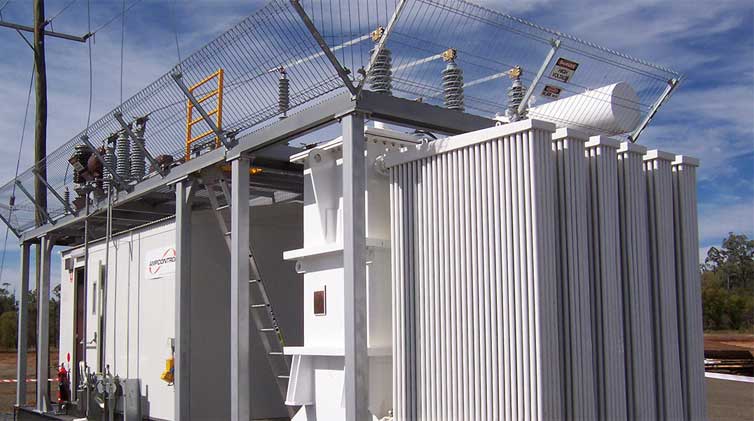The Difference between the Oil Immersed Type Transformer and Dry-type Transformer
1. The capacity of oil immersed type transformer and dry-type transformer
The oil immersed type transformer generally has larger capacity than dry-type transformer. Dry-type transformer is generally suitable for power distribution, most of which has a capacity below 1600KVA with the voltage below 10KV, and some of them have the voltage level of 35KV. However, the oil-type transformer can have all the capacities and voltage levels, no matter big or small.
2. The appearance of oil immersed type transformer and dry-type transformer
From the appearance, the biggest difference between the oil immersed type transformer and the dry-type transformer is whether there is any"oil". Since oil is liquid and has fluidity, the oil immersed type transformer must have a shell and the inside of the shell is the transformer oil, in which the coils of the transformer are immersed. Therefore, the coils of the transformer cannot be seen from the outside.The dry-type transformer has no oil, so that it has no shell and the coils of the transformer can be seen directly.
3. The radiator of oil immersed type transformer and dry-type transformer
Another characteristic is that there is an oil pillow on the oil immersed type transformer, in which the transformer oil is stored; In order to facilitate heat dissipation,that is, to facilitate the heat losing by the flow of the internal insulating oil, a radiator is designed on the outside, just like a cooling fin. The dry-type transformer does not have this radiator. The heat is dissipated by a fan under the coils of the transformer, which is a little bit like the indoor unit of a domestic air conditioner. Due to the need of fire prevention, the oil immersed type transformer is generally installed in a separate indoor or outdoor places, while the dry type transformer must be installed indoor, generally in the low-voltage distribution room, side by side with low-voltage distribution cabinets.
Jump to Content Sections
Leave a Message
You May Also Like
 English
English  français
français  Español
Español  русский
русский  العربية
العربية  tiếng việt
tiếng việt  Malay
Malay  Indonesia
Indonesia  বাঙালি
বাঙালি 


